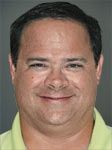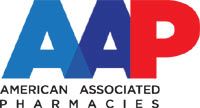Independent pharmacies: Good partners for vendors and wholesalers
The CEO and COO of American Associated Pharmacies, the product of the merger between Associated Pharmacies and United Drugs, talk about the new pharmacy cooperative and the future of community pharmacies.

Key Points
In an effort to facilitate understanding between executives and pharmacists, we are inaugurating the "CEO Minute." This month we talk to pharmacy cooperative executives.
We talked to the chief executive officer and chief operating officer at newly-formed American Associated Pharmacies (AAP). [Drug Topics reported on the genesis of AAP in our June 15, 2009 E-News: "Associated Pharmacies and United Drugs merge."] CEO Jon Copeland and COO Bruce A. Semingson talked to Drug Topics about their business and how they see the future landscape shaping up for the independent pharmacist.
"No one can beat the independent pharmacist at their greatest skill: Taking care of patients," Semingson said.
According to Copeland, "Our members are the pharmacies, which have the ownership of the organization. The member companies elect the board of directors. Our profits are given back to the members." Semingson added that the value of AAP to the independent pharmacists includes the third-party business support they offer. "We do this through third-party contract and claim management, which accounts for 85 to 90 percent of the total revenue into [a typical] pharmacy."
Copeland said that AAP "would like to see and have seen improvements in the member pharmacies'net profitability by 30-40 percent. We also aim to be a resource topharmacies regarding business and political issues."
Health reform and the future
Health reform is going to have an impact on AAP's business - and yours. "Over the next five years, we will see increased pressure on the margins on a per-script basis," Semingson said. "With margins coming under increasing pressure, the independent pharmacist - indeed, all pharmacies - are going to need new tools [to remain competitive]." He also cited the impact of technology. "You will have to embrace technology, no matter where you practice." A third issue over the next five years is government regulation. "The AMP issue alone is huge," Semingson said. "Another factor is the accreditation and bonding for the sale of durable medical equipment [Medicare Part B]. And of course, there's the continuing impact of Medicare Part D."

Impact of the AWP settlement

Final words
